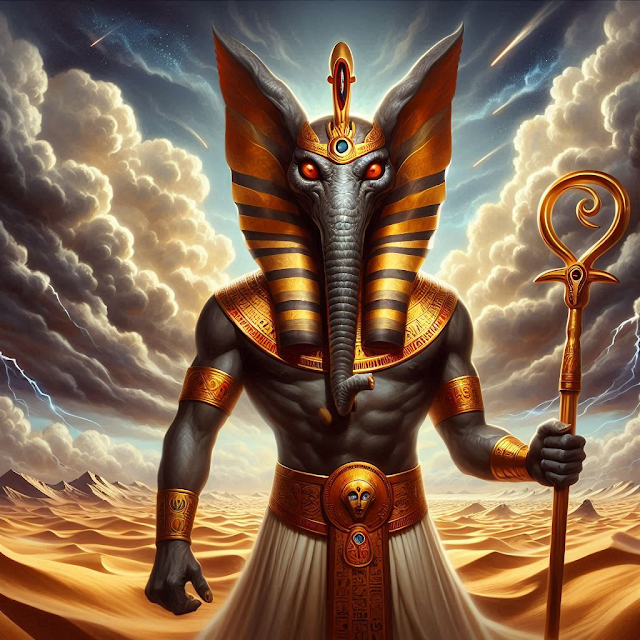When diving into the rich mythology of ancient Egypt, one cannot overlook the enigmatic and polarizing figure of Seth, also spelled Set. As the Egyptian god of chaos, desert storms, violence, and foreign lands, Seth played a crucial role in the cosmic balance between order and disorder. Often misunderstood, Seth was both a villain and a necessary force in the pantheon of Egyptian deities.

🦂 Who Is Seth, the Egyptian God of the Desert?
Seth is a prominent figure in Egyptian mythology, often associated with the desert, the scorching sun, and turmoil. He is the brother of Osiris, Isis, and Nephthys, and the uncle of Horus.
In myth, Seth is infamous for murdering his brother Osiris, which catalyzed one of the most important mythological conflicts: the battle between Seth and Horus for the throne of Egypt.
⚖️ The Battle Between Seth and Horus: Order vs. Chaos
After Seth killed Osiris, a bitter war broke out between him and Horus, Osiris’s son. This struggle, lasting over 80 years in the myth, was symbolic of the eternal fight between chaos (Seth) and order (Horus).
Eventually, Horus prevailed, becoming the rightful ruler of Upper and Lower Egypt, but Seth was not eradicated. Instead, he was often depicted as a necessary component of Ma’at (cosmic balance), showing that Egyptian mythology didn't see chaos as purely evil—it was something to be tamed and balanced.
🐾 The Iconography of Seth: The Mysterious Seth Animal
One of the most distinctive aspects of Seth is his appearance. He is usually depicted with the head of a unique, unidentifiable creature known as the Seth animal—a composite beast with a long, curved snout, squared ears, and a forked tail.
This mythical animal has baffled historians and Egyptologists for centuries. Some suggest it may represent an extinct creature or simply be a symbolic creation meant to represent foreignness and chaos.
🌪️ Powers and Domains of the Egyptian God Seth
As a god, Seth wielded immense power over storms, deserts, conflict, and foreign lands. In the later periods of Egyptian history, especially during the Hyksos and Ramesside dynasties, Seth even gained favor as a protector of the sun god Ra, battling the chaos serpent Apophis each night.
This duality—both destroyer and protector—made Seth a complex figure in the Egyptian pantheon. He was feared, but also revered for his strength and his role in defending cosmic balance.
🔥 Worship and Legacy of Seth in Ancient Egypt
Although demonized in some periods, Seth had numerous cult centers, particularly in Ombos (Naqada) and Avaris. During the Second Intermediate Period, the Hyksos, foreign rulers of Egypt, adopted Seth as their primary deity, associating him with their own gods of war and weather.
His worship waned over time as Horus and Osiris grew in popularity, and in later Egyptian and Greco-Roman writings, Seth became increasingly vilified—eventually equated with Typhon, the monstrous force of Greek mythology.
🧠 Understanding the Role of Seth in Egyptian Mythology
Rather than seeing Seth purely as a villain, it’s important to recognize his nuanced role in Egyptian theology. He embodied change, conflict, and the unpredictable forces of nature—all of which were essential parts of the Egyptian worldview.
His enduring myth reminds us that chaos, while dangerous, is also a necessary force for balance and renewal.
